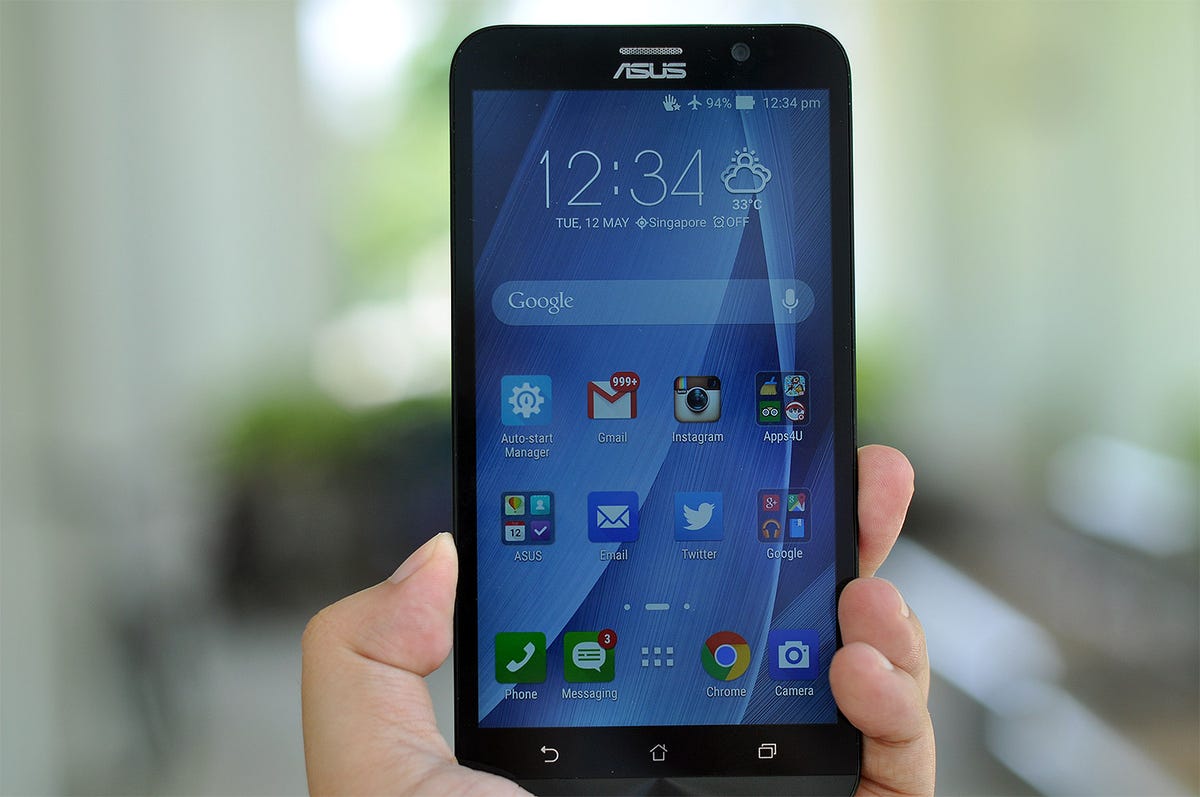ZenFone 2 (5.5-inch) review: Impressive low-light camera performance on this capable handset
If the 4GB version of the Asus Zenfone 2 were $100 cheaper, it would be near the top of our recommended phones list; however, its $299 and S$499 (converting directly to about £245 and AU$475) price makes it a tough sell in a world of capable sub-$200 phones.
Mục Lục
The Good
The Asus ZenFone 2 delivers smooth performance, an impressive low-light camera, and has a clean feature-rich UI. The 5.5-inch screen is sharp and bright.
The Bad
The phone has a cheap bulky feel and an unintuitive button layout. Its non-swappable battery delivers only decent life. The price is too high for its above-average capabilities.
The Bottom Line
The Asus ZenFone 2 is too expensive for its above-average ability, but if the price agrees with you, the smooth performance and splendid low-light camera won’t disappoint.
There is a cheaper 2GB version of the phone retailing for $199 (converting to £127 and AU$249); however, since we’ve as of yet spent no time with the 2GB version, we can’t yet say how it performs compared to the its 4GB sibling. Both versions of the phone are available now unlocked at Amazon, Newegg and Groupon in the US.
The 4GB ZenFone 2 is somewhere in-between budget and flagship, but unfortunately lacks the top-of-the-line performance and features we’d expect from a high-end handset. That said, it’s capable in its own right, delivering silky smooth performance thanks to its combination Intel Atom CPU and 4GB of RAM. And while its 13-megapixel rear camera takes decent shots, its low-light performance handily beats that of the Samsung Galaxy S6 and Apple iPhone 6.
It has a sharp vibrant 5.5-inch screen, but the plastic build unfortunately feels cheap and bulky. Its Zen UI is clean, aesthetically pleasing and packed with useful features, but can at times isn’t all that intuitive to navigate thanks to the changes Asus made to its Android 5.0 interface.
Those looking to spend less, should check out the Samsung Galaxy Grand Prime. It has longer battery life, decent cameras and costs less than $200. The Galaxy S6 and S6 Edge are the current highest of high-end Android, but tip the scales at $600 unless you’re willing to commit to a 2-year contract.
Confusing lineup
What Asus calls the ZenFone 2 is actually two different models with five different variants, three with 5.5-inch screens and two with 5-inch displays. Each model has a different price point, RAM, and built-in storage capacity, but the whole range is marketed under the same name.
Asus is likely trying to avoid last year’s problems with its first ZenFone line — the phones were marketed as ZenFone 4, 5 and 6, which was probably even more confusing for consumers since it sounded like subsequent generations of phones were being sold at the same time. To lesson the confusion, we’ve created a table that lists the details of each of the new ZenFone 2 models. Our review unit is the 5.5-inch version with 4GB RAM and 32GB of onboard storage that retails for S$429 and $299 in the US (around £210 or AU$410).
DisplayStorageRAMProcessorPrice (US)Price (Singapore) ZE551ML 5.5-inch (full-HD)64GB4GBIntel Atom Z3580 2.3GHz$299S$499ZE551ML 5.5-inch (full-HD)32GB4GBIntel Atom Z3580 2.3GHzNAS$429ZE551ML 5.5-inch (full-HD)32GB2GBIntel Atom Z3560 1.8GHz$199S$349ZE550ML 5.5-inch (full-HD)16GB2GBIntel Atom Z3560 1.8GHzNAS$299ZE500CL 5-inch (HD)16GB2GBIntel Atom Z2560 1.6GHzNAS$249
Design
- 5.5-inch, 1,920×1,080-pixel IPS (403ppi)
- 6 x 3 x 0.4 inches (152.5 x 77.2 x 10.9 mm)
- 6 ounces (170g)
The design of a modern smartphone is usually dictated by the screen size, and in this case the 5.5-inch full-HD display means the ZenFone 2 is quite a handful — the phone checks in at 152.5 x 77.2 x 10.9 mm (6 by 3 by 0.43 inches) and isn’t the thinnest of devices. It’s just slightly shorter than the iPhone 6 Plus, but the Apple phone is thinner at 7.8mm. The thickness means the ZenFone does make its presence felt in the pocket, and with more smartphones taking the slim approach, the ZenFone 2’s size and weight of 170g (6 ounces) doesn’t do it any favors.
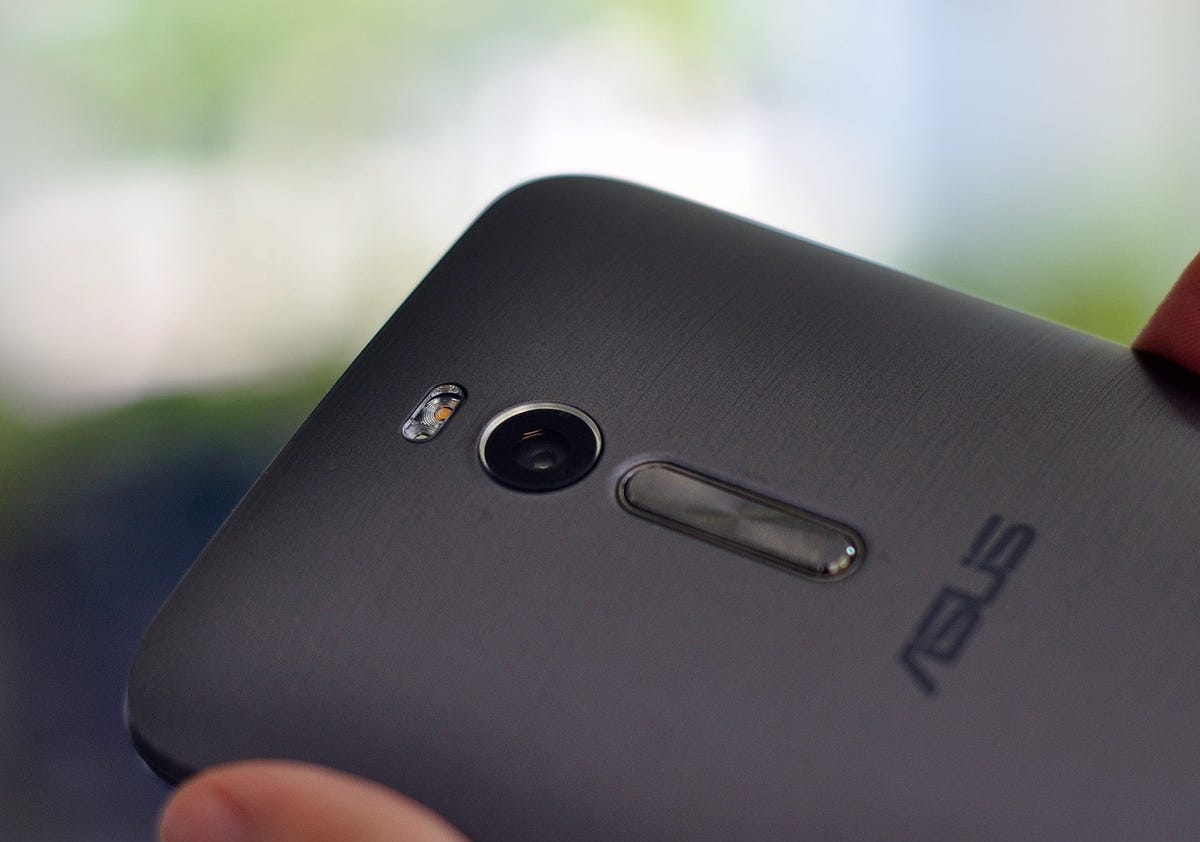
The phone’s rear sports a brushed metal look, but it’s actually plastic.
Clad in plastic like the first ZenFone, the ZenFone 2 opts for a brushed metal look, unlike the soft-touch feel used previously. While it looks metallic, it still feels slightly plasticky (I prefer the original, though I can see why Asus chose to go with the metallic style) and it looks a lot more premium at first glance.
That said, the rear cover is replaceable and comes in a variety of colors — the standard black and white, and a more colorful range of red, gold, grey. Asus will also sell a special range of “Illusion” covers that come in a pretty crystal pattern.
Viewed head on, the ZenFone 2 resembles the first ZenFone, from the Asus logo near the top speakers, to the concentric circle pattern below the 5.5-inch display. The touch-sensitive buttons are located just above that. In a way, I’m glad that Asus has stuck with the familiar, but I do wish the phone used software buttons instead — this would probably have helped cut down on the phone’s size.
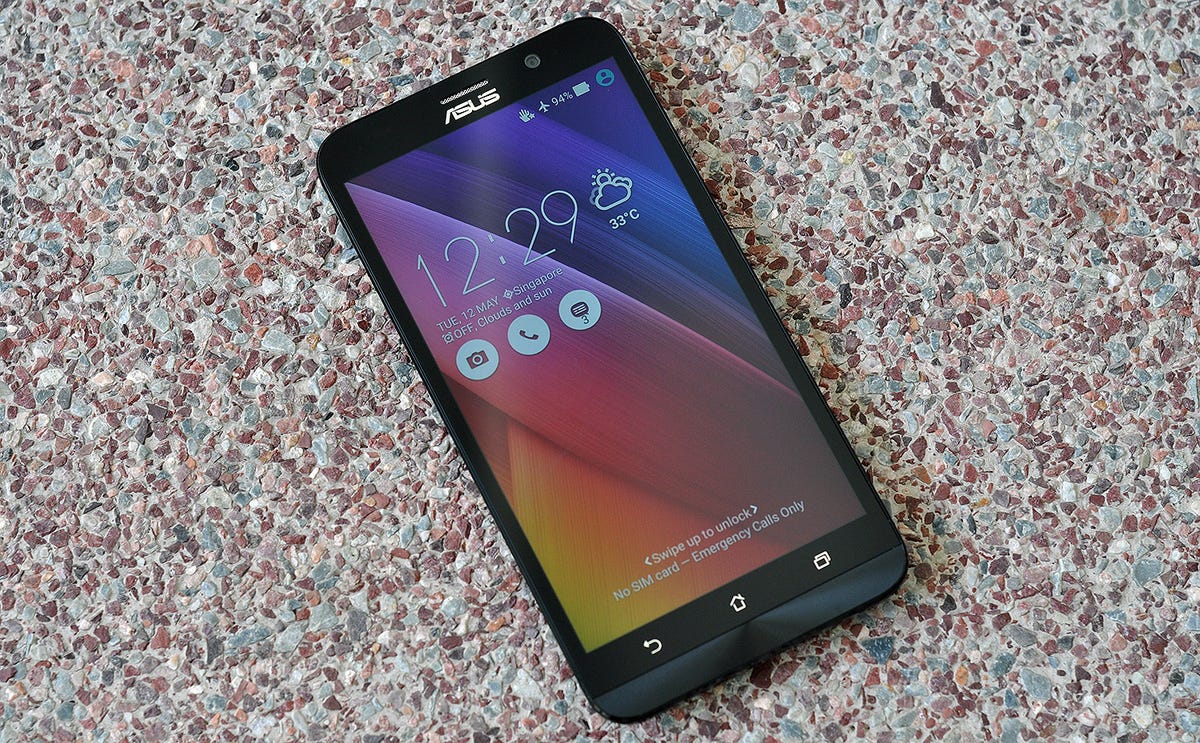
The ZenFone 2 resembles the original ZenFone and uses touch-sensitive menu keys as well.
Right at the top is where you’ll find the awkwardly placed power button, and it’s an odd choice, since Asus has chosen to borrow LG’s great idea of moving the volume buttons to the rear of the phone. The button is quite a stretch to reach it if you’re holding the phone with one hand. Asus should have just placed the power button on the rear, together with the volume controls.
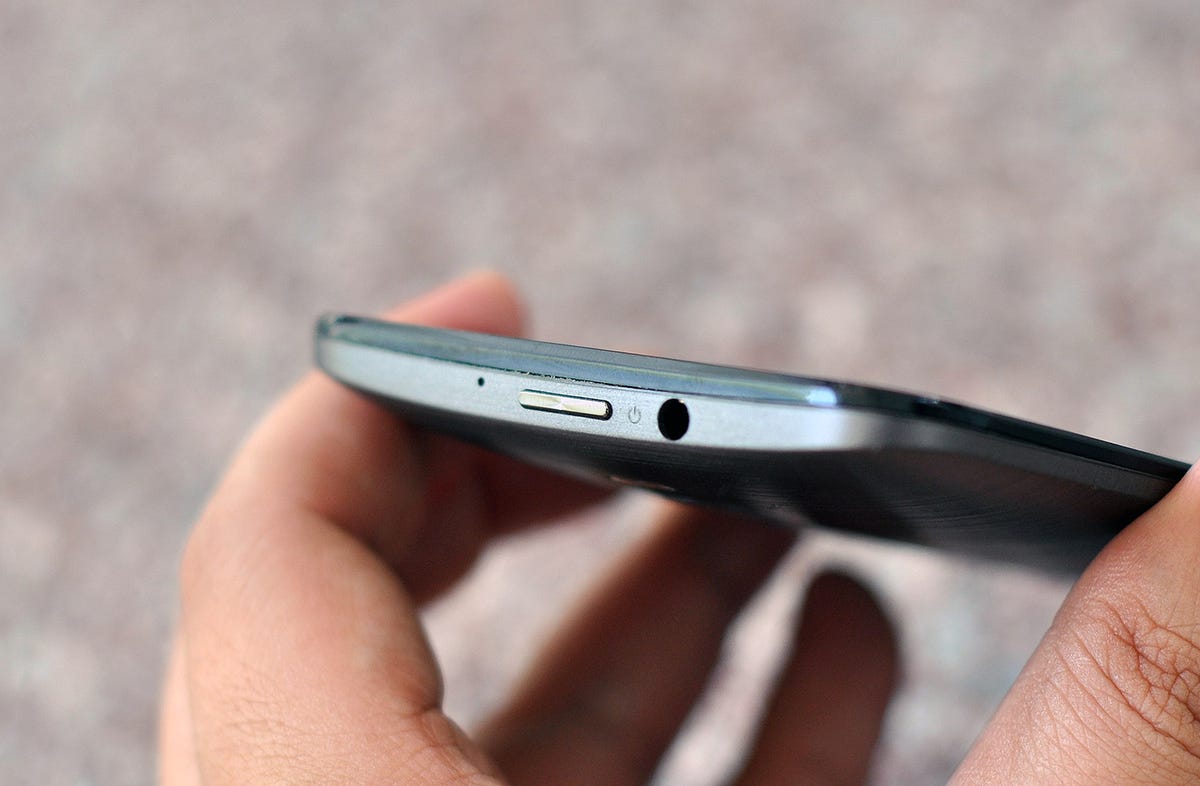
The power button is placed at the top next to the 3.5mm audio jack. It’s quite a strange position since you’ll have to stretch your fingers to reach it.
The removable rear cover gives you access to the dual-SIM and microSD slots. The 3,000mAh battery is non removable, so you won’t be able to swap it out for a fresh one. Unlike some of the other dual-SIM phones which come with dual 4G capabilities, the ZenFone 2 only has one active 4G SIM, with the other SIM limited to 2G speeds.
Hardware and software features
- 2.3GHz quad-core Intel Atom Z3580
- 32GB of storage
- 4GB of RAM
- Expandable storage
- 3,000mAh non-removable battery
Powered by Intel’s Atom Quad Core Z3580 processor clocked at 2.3GHz, this model of the ZenFone 2 comes packing a whopping 4GB of RAM. Most smartphones, including high-end flagships, come loaded with 3GB at most. Asus claims having 4GB of RAM helps the ZenFone 2 multitask (more on this later), as multiple apps and can remain on standby in the background without needing to be offloaded to memory and reloaded.
Our review model came with 32GB of onboard storage, and if that somehow isn’t enough for your needs, there’s a microSD slot to add even more space. There’s a 13-megapixel camera located at the rear, and a 5-megapixel shooter on the front.
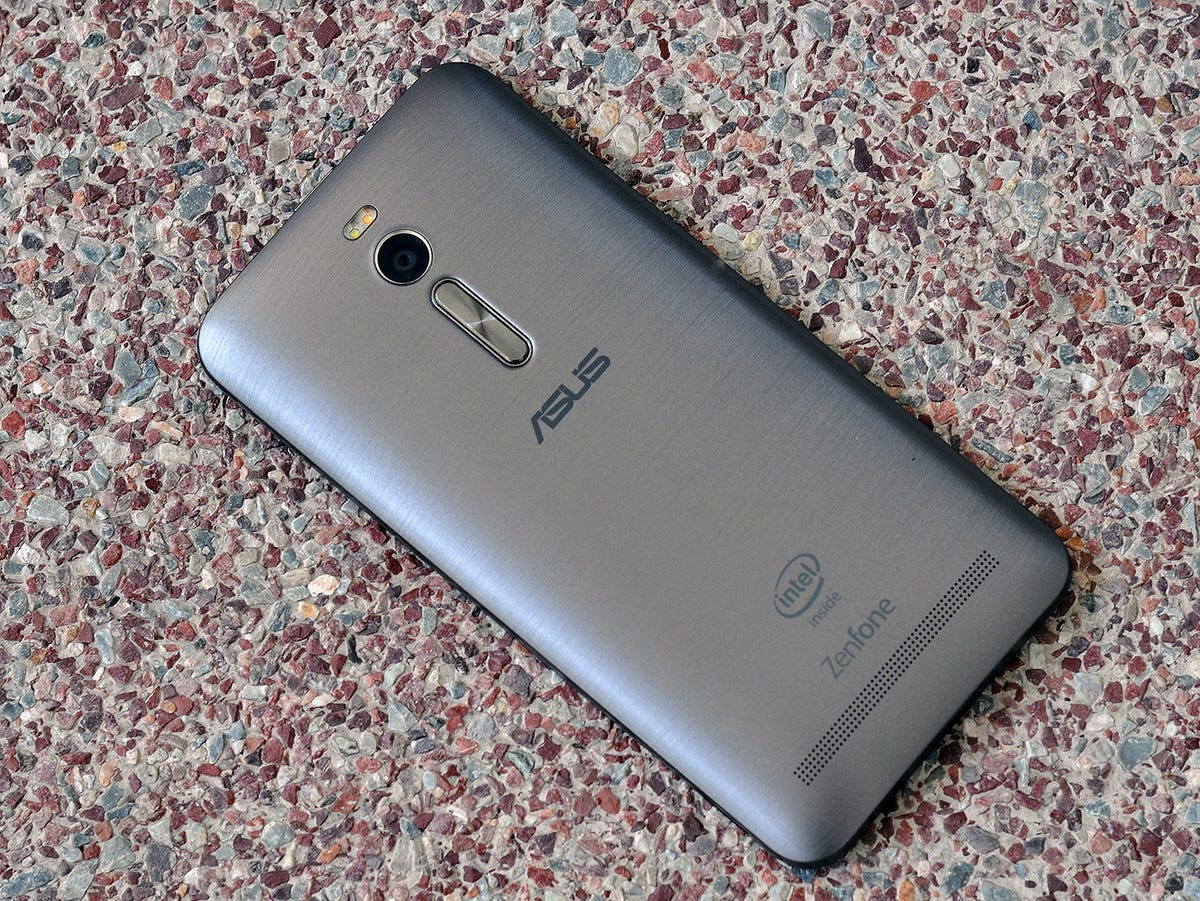
The rear 13-megapixel camera comes paired with dual-LED flash.
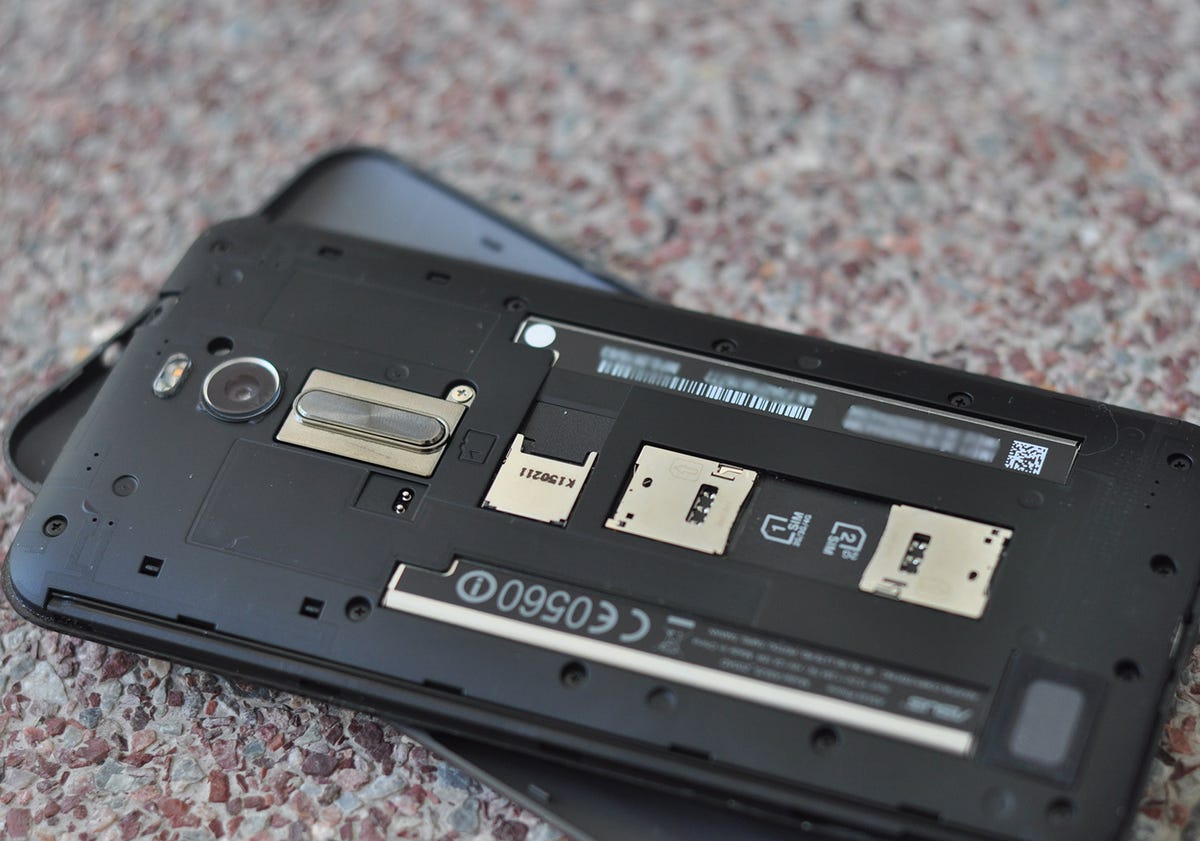
Inside you’ll find the dual-SIM and microSD card slots. The battery is non-removable. Do also note the phone only supports 4G on one SIM slot, the other SIM slot is stuck on 2G.
The 5.5-inch display comes with a full-HD resolution of 1,920×1,080-pixels, protected by Corning’s Gorilla Glass 3. Sure, it’s not a QHD display found on some flagships, but only a few users would be able to tell the difference between 2K resolution and full-HD. Also, the screen has wide viewing angles and colors are bright and vibrant. Even under direct sunlight, the integrity of the screen holds up well.
Asus has polished its Zen UI further, but it’s a custom skin layered over Google’s Android 5.0 Lollipop. Since its introduction last year, Zen UI features a flat minimalist look. Features from the earlier iteration return, such as Do It Later, a handy reminder app that helps you keep track of SMSes to reply to, articles to read and missed calls to return.
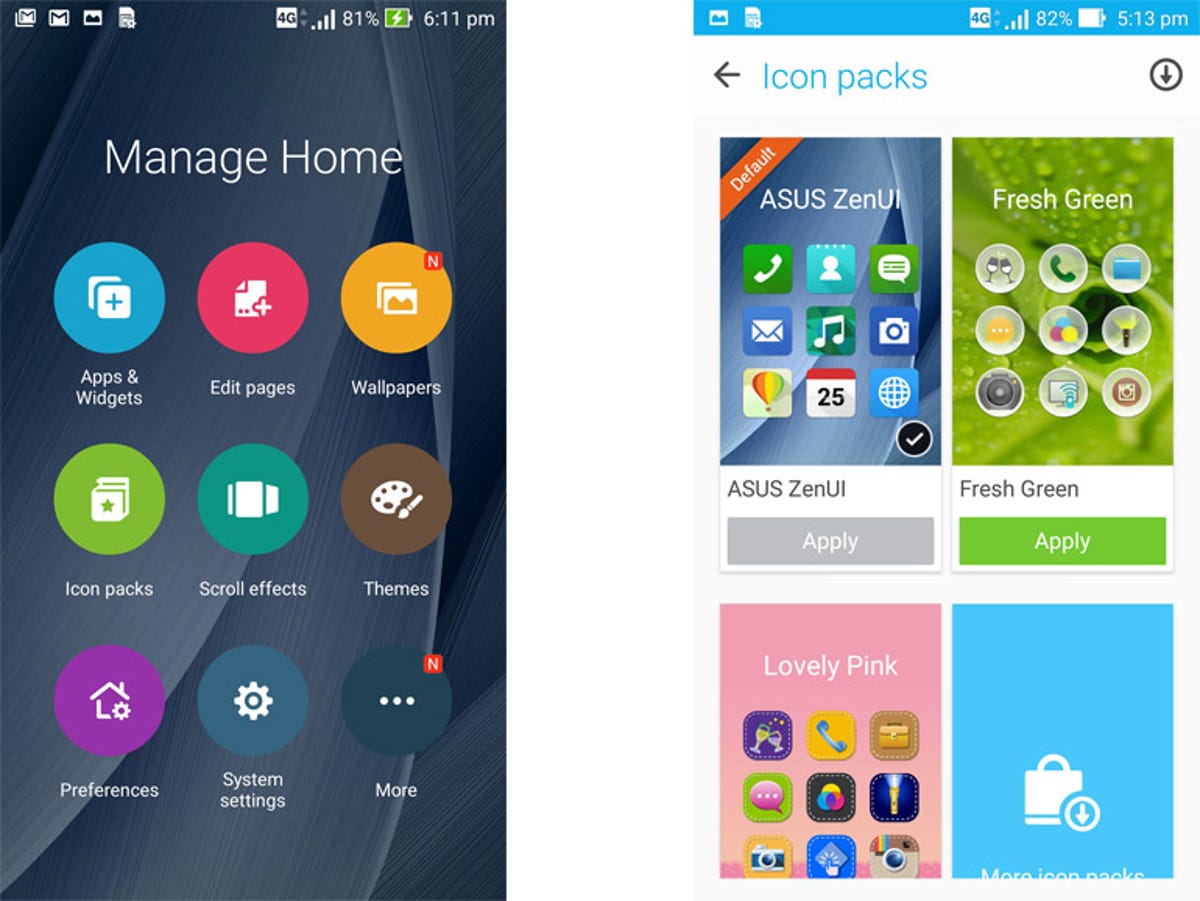
Zen UI packs plenty of new features, including the ability to theme the phone’s look and icons.

Zen UI also offers a lot of customization options that will boggle your mind with choice.
Like Chinese smartphone maker Xiaomi’s MIUI, Zen UI also features the ability to change your phone’s theme, so if you don’t like the current look, you can swap it to something you’d prefer. Another fun thing you can do is change the color of the fonts on your phone — this works if you prefer a lighter background wallpaper — you can then use a darker color for your fonts so that it shows up. New features include drawing on the screen when the phone is locked to activate features called ZenMotion and a guest mode for when you need to pass the phone over to a friend to use (though you’ll need to make sure you password lock your phone first so they can’t switch it back and access your data!).
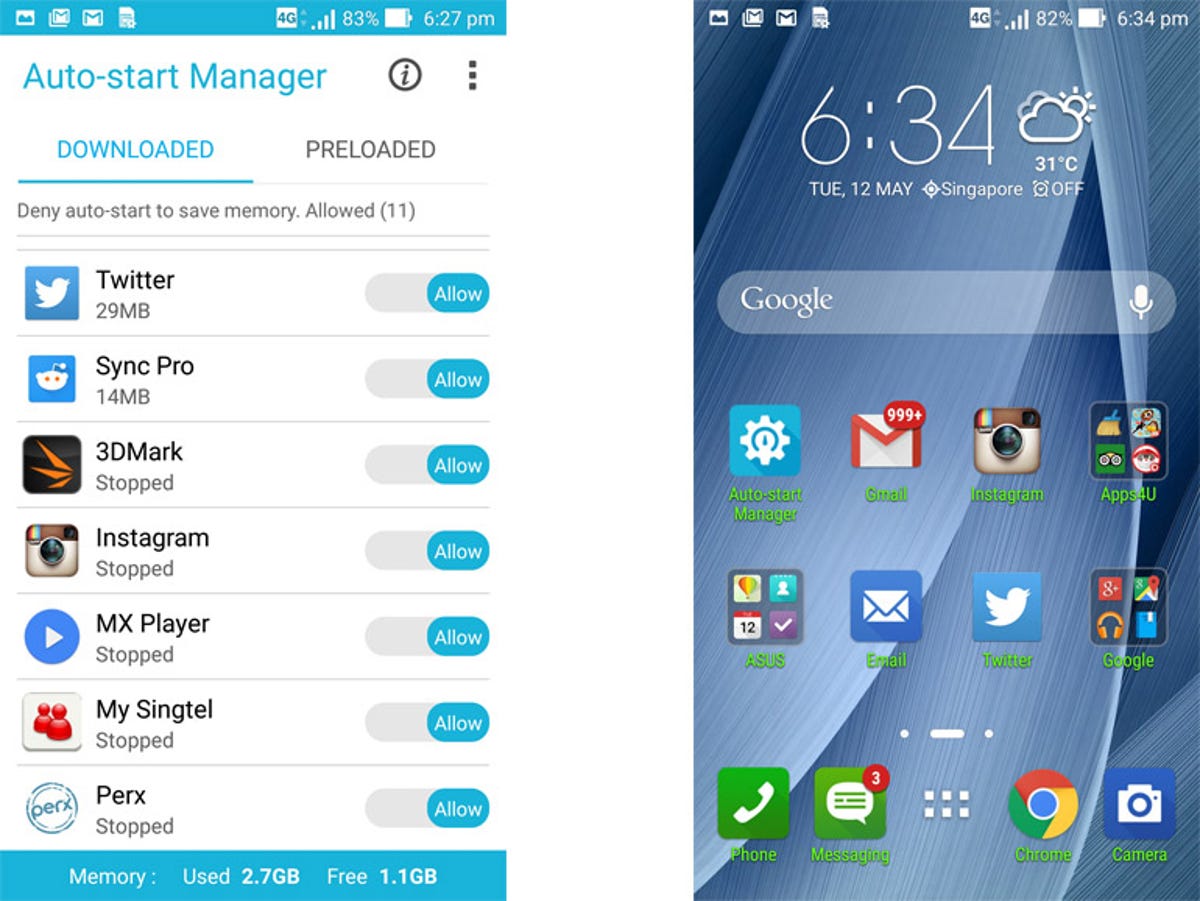
The Auto-Start Manager app lets you select which apps to load into memory when you reboot your phone. You can also change the font colors on the home screens.
There are also a bunch of hidden tweaks, such as the ability to double tap the Home button to turn on one-handed mode, and power users will appreciate the fact you can also set which apps will autorun when the phone boots to help it start faster.
Asus however seems to have forgotten about some important bits of the UI design. Annoyingly, there’s no ‘clear’ button for notifications on the lock screen, something other Lollipop phones have.
It’s still a pretty good UI, and Asus has done a great job of adding its own touch to Android. The biggest issue I have is that the UI is packed with so many features you’ll have to take your time to learn them all, and it feels like the Samsung kitchen-sink approach all over again where there’s just way too many features that never really get discovered or used.
Camera
- 13-megapixel rear camera
- 1,080p HD video
- 5-megapixel front camera
- Low-light mode
Asus put plenty of work into the ZenFones 2’s 13-megapixel f/2.0 rear camera, resulting in impressive low-light performance. Called PixelMaster, the phone’s low-light mode imaging tweaks to deliver well-lit shots even when there’s barely any light.
There are however a few caveats with low-light mode. First, shots taken in this mode are hypersensitive to movement, so you’ll need to hold the phone really steady or use a tripod to avoid blurry shots. Also, the resulting image is only 3 megapixels in size, since it uses pixel binning, which combines four pixels into one. This “larger” pixel is able to read more light data, leading to a better low-light shot. The resulting picture is surprisingly bright compared with other phones.
Now, I can testify that this works — the picture is surprisingly bright compared with say, high-end phones such as the iPhone 6 and the Samsung Galaxy S6 Edge. Do take note this isn’t a new feature, it was already present on the first ZenFone, but it seems to have been improved upon.
The front 5-megapixel camera includes a beautification mode, which helps smooth out wrinkles and touches up blemishes on your skin. Not something we haven’t seen before in other phones, but still useful.
The ZenFone 2 is capable of shooting full-HD video, and like all smartphones, videos are best shot in bright light for the best performance. During my test, I did find I’d have to tap the screen to refocus, since the autofocus didn’t kick in when you transition to a background to a foreground shot.
Check out the shots below to find out how the camera performed in my tests.
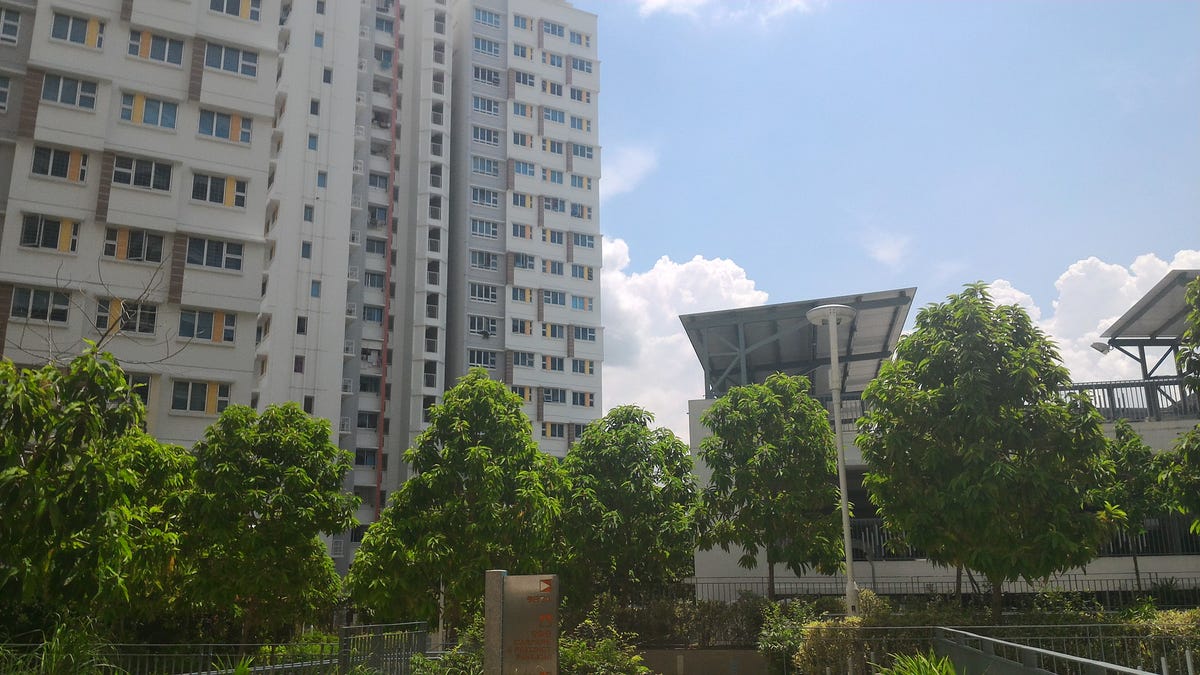
Enlarge Image
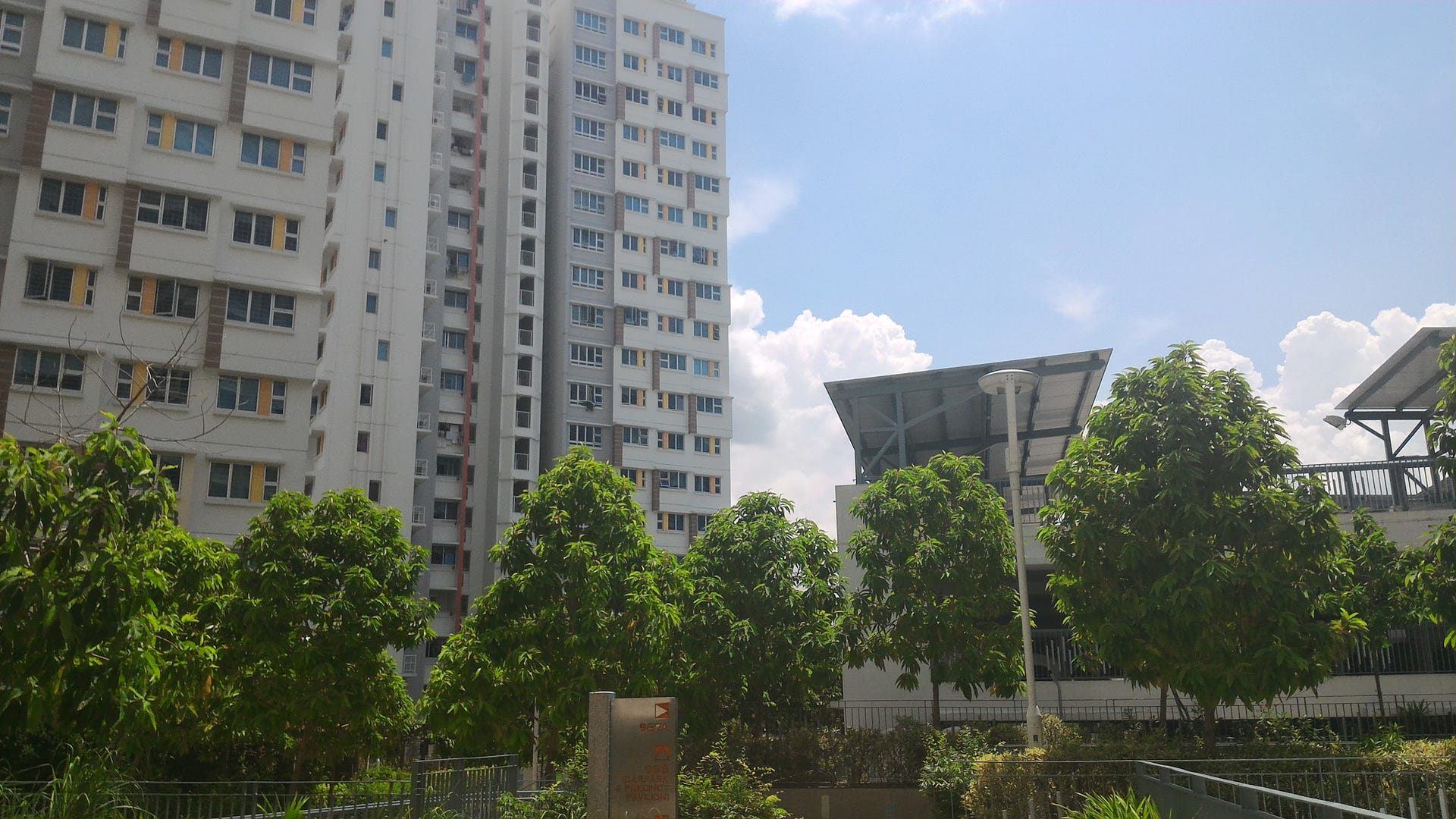
Outdoor test shot without HDR. Colors seem a little too saturated here, but HDR (in the next picture) cranks it up a lot.

Enlarge Image
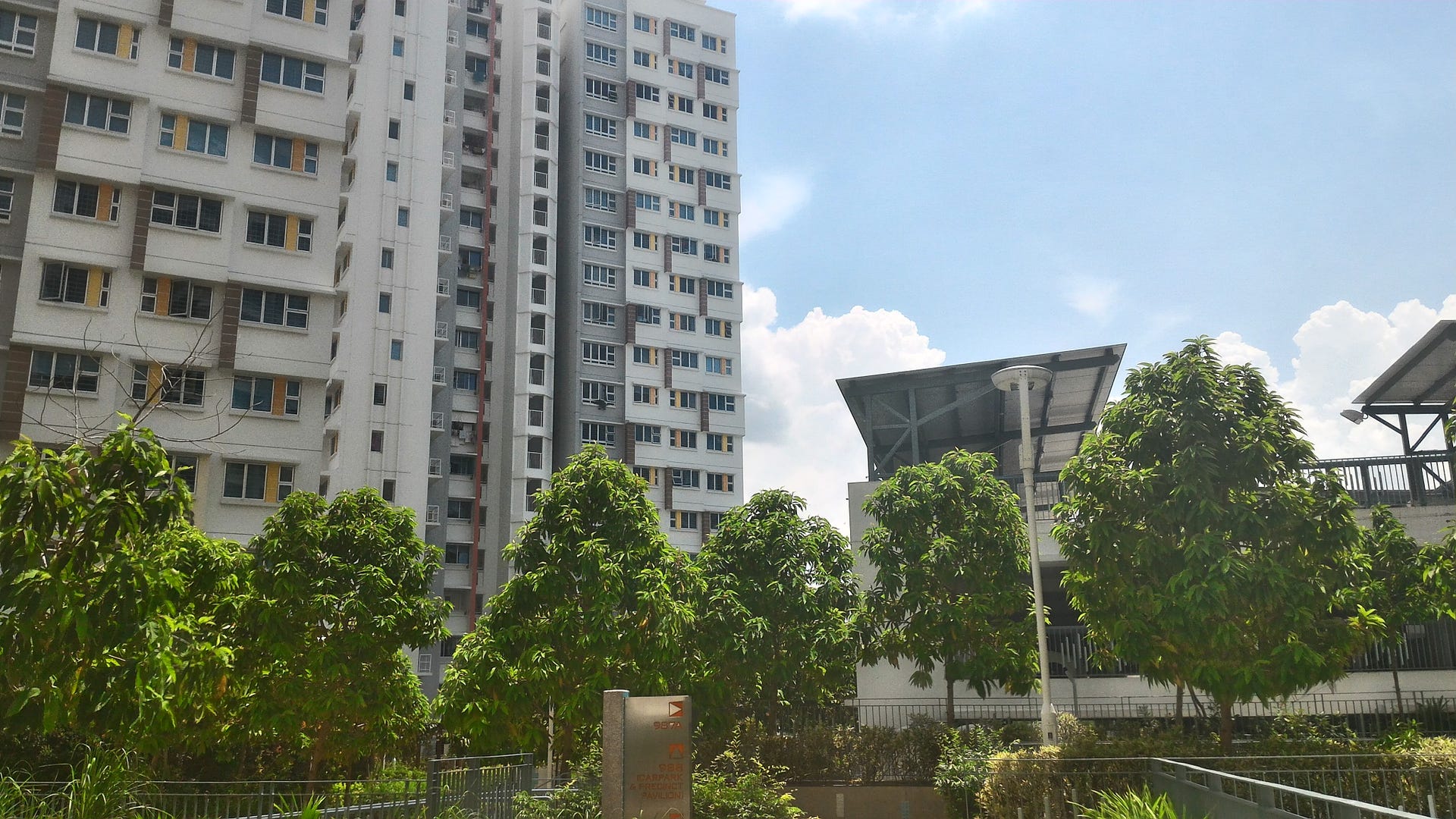
Here the trees at the bottom get the HDR treatment, but it seems way too saturated and warm for me.

Enlarge Image

This close-up shot managed to capture the details while still managing some nice background bokeh.

Enlarge Image

The ZenFone 2 seems to slightly overexpose indoor shots, I noticed this in the other pictures I took. The camera seems to perform better under incandescent lighting.

Enlarge Image

Low-light mode is where the phone really shines, and you’ll see in the next picture why I feel the ZenFone 2 is really better for lowlight shots in this mode.

It’s not that the shots are bad, but the low-light mode of Asus is a lot brighter (though at the cost of picture size). That said, if you don’t use lowlight mode, the image taken with the ZenFone 2 isn’t quite as good as the Galaxy S6 Edge or the iPhone 6 Plus.
Performance and battery life
Intel’s known for its desktop and notebook processors, and its efforts to gain a foothold in the handset business have been decent so far. Earlier versions of its mobile processors weren’t as power efficient as ARM devices. But Intel has worked on improving the performance and efficiency with the newer Intel Atom devices. While most of them are better for tablets, the chip maker has spent time on getting its processors ready for mobile.
Given that there aren’t many Intel-powered phones in the market right now, it’s hard to find a direct comparison with another phone. But going by the benchmark results, the quad-core Intel Atom Z3580 processor inside the ZenFone 2 seems capable of going up against the midrange Qualcomm chipsets, such as the Snapdragon 615 found in the Xiaomi Mi 4i. The benchmark results seem to indicate performance around the same levels.
Now, of course, benchmark results don’t tell the whole performance story, but I found the ZenFone 2 to be pretty smooth during day-to-day use. The phone booted up in 44 seconds, and the camera loaded instantly. On games such as Asphalt 8, a hardware-taxing 3D driving game, the phone ran smoothly with nary a hiccup and loading times were zippy.
Based on the numbers below, it would seem that the Intel Atom CPU is achieves similar performance to a midrange Qualcomm chip, such as the Snapdragon 615 on the Xiaomi Mi 4i. The numbers are pretty close on Quadrant — 24,606 to the ZenFone 2’s 22,991, but the ZenFone 2 loses out in the Geekbench 3 test with a score of 2,926 to the Mi 4i’s 2,566. On 3DMark the phone does well, but isn’t exactly setting the world afire. The ZenFone 2 delivers smooth performance when opening apps and navigating the interface, and while we didn’t experience any problems when playing games, don’t expect performance to reach the same levels of top flagships like the Galaxy S6 or LG G4.
It seems Intel may have finally gotten its Intel Atom chips right for phones, and perhaps we will see more devices being powered by its processors — this could open up the market further, as devices no longer need to be limited to ARM chips. However, let’s hope a GPU upgrade is in the works for future versions of the chip.
Performance Test
Test 1Test 2Test 3Average Geekbench 3 2395265726482566Quadrant 232072230423462229913DMark Ice Storm Unlimited 10544106911073210665
On our continuous video looping tests, the ZenFone 2 lasted 9 hours 33 minutes. That’s about four hours less than the Mi 4i (which has a slightly larger 3,120mAh battery) which lasted 13 hours and 18 minutes, it’s not really as good. Perhaps video playback isn’t really the phone’s strong suit, as I found that anecdotally, the phone usually lasts a whole day for me, which is good enough, but still not great.
Call quality
During my time with the ZenFone 2, I had no issues with making calls. Voices were clear and crisp and the other party could hear me clearly as well. The phone’s speakers, however, can be a little soft, so you may miss calls or notifications if you’re in a noisy place.
4G LTE speeds seemed pretty decent — the phone was tested in Singapore on SingTel’s 4G network, on the Ookla Speedtest app, the ZenFone 2 managed to pull 72.85Mbps download speeds on its fastest run.
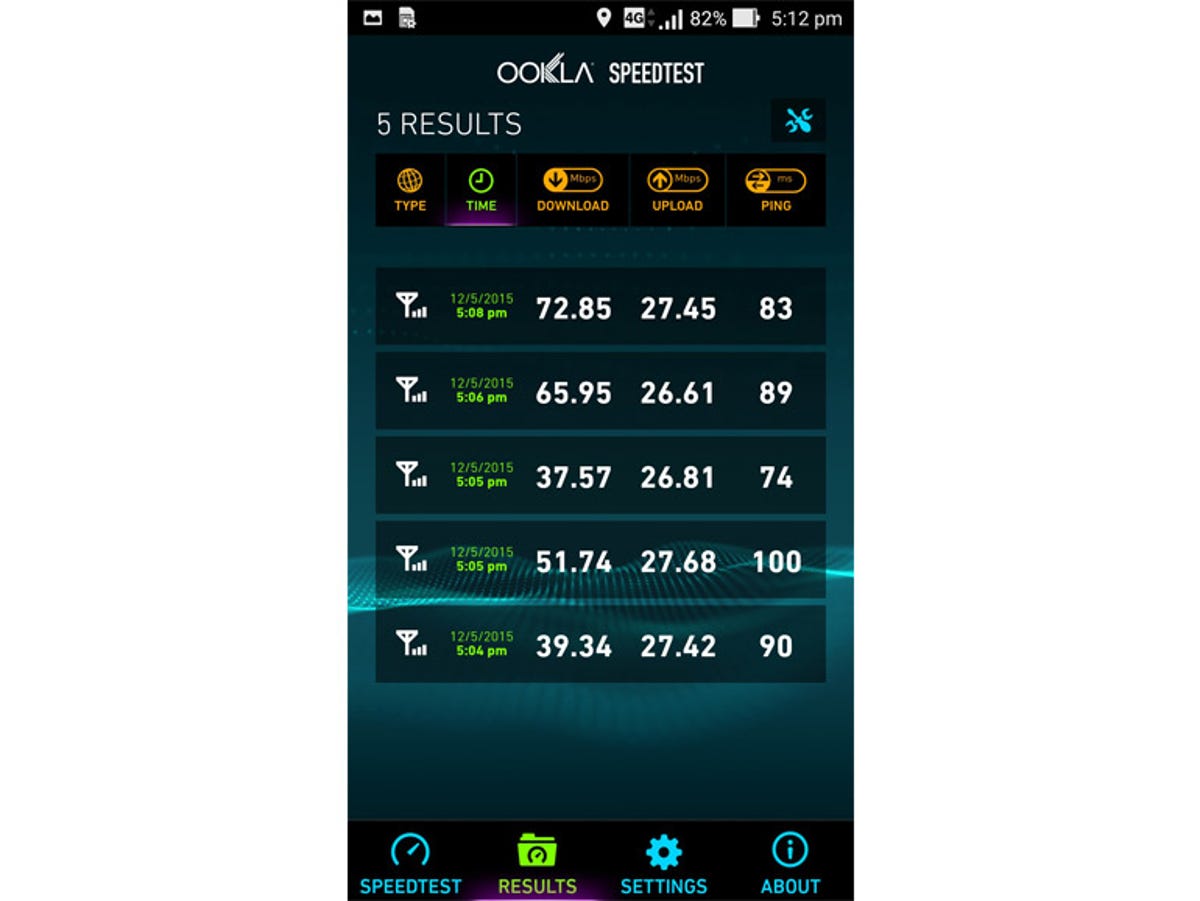
The phone was tested in Singapore on the SingTel 4G network.
Conclusion
While the ZenFone 2 won’t dazzle you with a beautiful design or premium materials, the hardware inside is far from lacking.
The Intel-powered phone manages to hold its own, but it’s still too early to tell if the ZenFone 2 will start a wave of smartphones using Intel chips. Given its relatively high $299 price (without a contract) for the top end model, Asus may struggle to gain ground against the much cheaper lower-end handsets such as the Mi 4i , which will be sold in the same markets in Asia, and the $200 Samsung Galaxy Grand Prime , available in the US. And if you factor in the $260 Mi Note (though this is still limited to China), the ZenFone 2 may seem a little overpriced.
There is still the $199 option, but it includes only 16GB of storage and 2GB of RAM (compared to the $299 version’s 64GB of storage and 4GB of RAM), and since we’ve only used the 4GB version, we can only speak to its merits.
But interestingly, the $299 price for the 4GB does put it in an interesting position, since the focus recently has been on either great low-value phones and high-end handsets. The ZenFone 2 could still be attractive for those who want near high-end performance without being tied to a contract.
